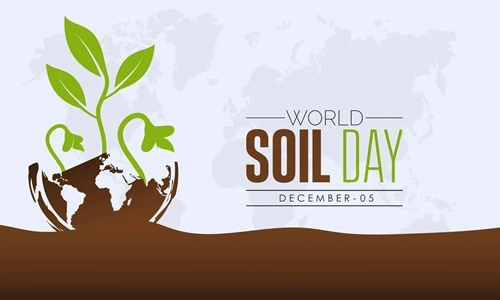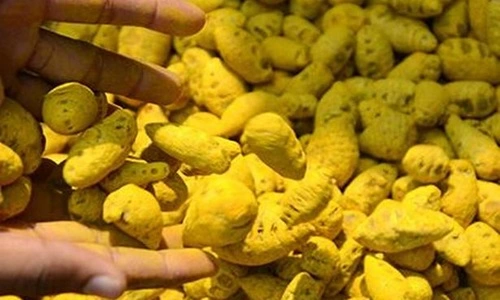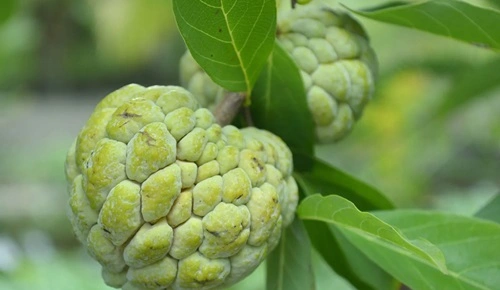World Soil Day, observed annually on December 5, is a global initiative to raise awareness about the critical role of soil in sustaining life on Earth. Proclaimed by the United Nations General Assembly (UNGA) in 2014, this observance underscores the importance of healthy soil for food security, ecosystem health, and sustainable development. The day also aims to mobilize action to combat soil degradation and promote sustainable soil management practices.
Here’s an in-depth look at the history, significance, and global efforts behind World Soil Day.
The Importance of Soil

Soil is a vital component of the Earth’s ecosystem, providing numerous services essential for life:
- Food Production: Soil supports plant growth, which is the foundation of the global food system. Over 95% of the world’s food is produced in soil.
- Water Filtration: Healthy soil filters and stores water, reducing the risk of floods and ensuring clean water supplies.
- Climate Regulation: Soil acts as a major carbon sink, helping to regulate greenhouse gas emissions and mitigate climate change.
- Biodiversity: A single gram of soil can contain billions of microorganisms, contributing to its fertility and ecological balance.
- Ecosystem Services: Soil provides raw materials, stores nutrients, and supports the construction of human infrastructure.
Despite its critical importance, soil is often overlooked and undervalued, leading to unsustainable practices and widespread degradation.
History and Origins of World Soil Day
World Soil Day originated as an initiative of the International Union of Soil Sciences (IUSS) in 2002. It gained global recognition when the Food and Agriculture Organization of the United Nations (FAO) endorsed it in 2013, and the UN General Assembly officially designated December 5 as World Soil Day in 2014.
The date was chosen to honor the legacy of King Bhumibol Adulyadej of Thailand, a champion of sustainable soil management, whose birthday falls on the same day.
The Significance of World Soil Day
World Soil Day is significant for several reasons:
- Raising Awareness: It highlights the importance of soil in addressing global challenges such as hunger, climate change, and biodiversity loss.
- Combating Soil Degradation: The day emphasizes the urgent need to reverse soil degradation caused by deforestation, overgrazing, urbanization, and industrial activities.
- Promoting Sustainable Practices: It encourages the adoption of sustainable soil management practices to enhance soil health and productivity.
- Mobilizing Global Action: By engaging governments, organizations, and individuals, World Soil Day inspires collective efforts to protect this precious resource.
Themes of World Soil Day
Each year, World Soil Day adopts a specific theme to focus on critical soil-related issues. Recent themes include:
- 2023: “Soils: Where Food Begins” – Highlighting the link between healthy soils and global food security.
- 2022: “Soil: Where our Roots Grow” – Emphasizing the role of soil in supporting agriculture and plant growth.
- 2021: “Halt Soil Salinization, Boost Soil Productivity” – Addressing the growing problem of soil salinity and its impact on crop yields.
These themes provide a framework for educational campaigns, events, and policy discussions around soil conservation.
The Problem of Soil Degradation
Soil degradation is a pressing global issue, with approximately 33% of the world’s soil already degraded due to factors such as:
- Deforestation: The removal of forests exposes soil to erosion and reduces its fertility.
- Overgrazing: Excessive grazing by livestock damages vegetation and soil structure.
- Urbanization: Expanding cities often result in soil sealing, where fertile land is covered by concrete or asphalt.
- Chemical Pollution: The excessive use of fertilizers, pesticides, and industrial waste contaminates soil, harming its biological activity.
Soil degradation has far-reaching consequences, including reduced agricultural productivity, increased greenhouse gas emissions, and loss of biodiversity.
Global Efforts to Protect Soil
The fight against soil degradation and the promotion of sustainable soil management involve several global initiatives:
- Global Soil Partnership (GSP): Led by the FAO, the GSP fosters collaboration among governments, organizations, and researchers to improve soil governance and health.
- Sustainable Development Goals (SDGs): SDG 15 aims to halt and reverse land degradation, promoting sustainable land use practices.
- Voluntary Guidelines for Sustainable Soil Management (VGSSM): These FAO guidelines provide actionable strategies for protecting and restoring soil health.
- The Bonn Challenge: A global effort to restore 350 million hectares of degraded land by 2030.
How World Soil Day is Observed
World Soil Day is celebrated through various activities and initiatives that promote awareness and action:
- Educational Campaigns: Schools, universities, and community organizations host workshops, seminars, and exhibitions on soil conservation.
- Tree Planting Drives: Planting trees and vegetation helps prevent soil erosion and enhances soil fertility.
- Policy Advocacy: Governments and organizations announce initiatives and policies to address soil degradation and promote sustainable practices.
- Soil Testing and Restoration: Farmers and agricultural communities are encouraged to test their soil’s health and implement measures to improve its quality.
- Media Outreach: Social media campaigns and public service announcements amplify the message of soil conservation.
How You Can Contribute
Individuals can play a vital role in supporting the goals of World Soil Day:
- Compost Organic Waste: Turn food scraps and yard waste into compost to enrich soil naturally.
- Avoid Overuse of Chemicals: Minimize the use of synthetic fertilizers and pesticides to protect soil biodiversity.
- Support Sustainable Products: Choose products from brands that prioritize sustainable land use practices.
- Raise Awareness: Share information about soil health and conservation on social media or in your community.
- Participate in Local Initiatives: Join community projects such as tree planting, urban gardening, or soil restoration efforts.
Looking Ahead: Building a Sustainable Future
As the foundation of agriculture, biodiversity, and climate resilience, healthy soil is essential for a sustainable future. Protecting this vital resource requires collaboration at every level—from governments and organizations to individuals and communities.
By adopting sustainable soil management practices, restoring degraded land, and promoting awareness about soil’s critical role, we can ensure a healthier planet for generations to come.
Conclusion
World Soil Day serves as a reminder of the indispensable role soil plays in sustaining life on Earth. It highlights the urgency of combating soil degradation and adopting practices that promote soil health and productivity. As we celebrate this day, let us commit to protecting and restoring soil, recognizing it as the foundation of food security, biodiversity, and sustainable development. Together, we can create a future where soil remains a source of life and prosperity for all.

